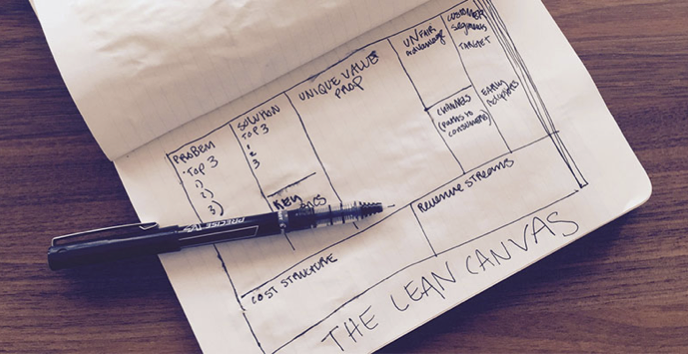Only 4 in 10 startups survive their first five years of trading.per a 2016 study by Ormsby Street.
Why do startups fail?
Respondents named the biggest hindrances to their success as cashflow problems (mainly due to late invoices), and tapping into narrow markets which are already dominated by big names: especially in the tech industry.
Starting up in difficult economic times and often-saturated markets can be enough to put any entrepreneur off taking the leap. At iDigitalise, we use the Lean Approach to Product Innovation to eliminate risk through systematic test-based solutions. We work closely with entrepreneurs and start-ups from the inception of their idea right through to bringing a product to market and beyond. The Lean Approach has a proven success rate for us, and it’s all down to a solutions-driven, scalable model which leaves no room for excess. So… what exactly is Lean?
The Lean Approach
The Lean Approach began in manufacturing, and was conceived by management working on the Toyota Production System, inspired by Japanese management methods. Over time, Lean has been adapted to fit a whole range of industries, and for us it works particularly well when mentoring entrepreneurs through product innovation and enterprise-building. The key considerations involved in Lean are part of an immersive approach:
- Bringing a product to market quicker
- Solving problems cheaper
- Measuring and improving the product quickly through test-based innovation
- Reducing risk through test-based problem-solving, trimming stock and excess workload
- Making the customers’ needs the primary focus in innovation
The key focus of Lean Product Innovation is that things are done – and problems are solved – quickly and cheaply. Many organisations take this to the extreme: striving for an ideal zero inventory and zero work-in-process, working to a just-in-time model whereby products are produced on demand. For some businesses, this works well; but the starting point for us is simply identifying and eliminating inefficiencies, implementing the silo effect and agile working practices; and ensuring that the organisational culture is an improvement-driven one, placing the customers’ requirements at the heart of every innovation.
Building a Lean product; growing a Lean enterprise
When mentoring start-ups and entrepreneurs still in the idea stage of their business, we use the Lean Approach to work through product strategy. We focus on scalability using technology, looking at the idea from three different dimensions:
- The problem-solution fit: do you have a problem worth solving? Understand the problem, considering all worst-case scenarios and risk factors. Then define a solution.
- The product-market fit: have you built something that people want? Who would want it, and what would make them want it from you (early adopters)? How will you form networks whereby you can connect with your early adopters?
- The MVP (Minimum Viable Product): what’s the cheapest, quickest, most efficient way you can build your product and bring it to market, while still solving the specified problem, and giving your customer what they want? Implement a continuous feedback loop whereby you are constantly able to adapt and innovate the product depending upon feedback or newly arisen problems.
Devising strategy: traditional vs Lean
The traditional approach to building a business model or product is fairly linear: you get an idea, you write a plan, secure investment, build and launch the product/plan, and then make discoveries about the next direction for your idea. With Lean, product innovation does not come at a static point in time after ticking off a list of requirements. The MVP is constantly changing and improving due to systematic test-based innovation:
- Get the idea
- Test the idea
- Refine the idea
- Build the MVP
- Measure results
- Refine the product or pivot
- Repeat
From the idea stage onwards, every aspect of the product and enterprise is tested for risk and potential inefficiencies. At iDigitalise, we encourage teams to work in a silo, maintaining a customer-oriented culture which strives for innovation and solutions-based rewards. Abstract thinking is encouraged; thus, risks are identified quickly and resolved efficiently.
There is no final stage of Lean, because innovation is a cyclical process, and there is no finite end-point for a product when it is ‘done’. In our tech-driven world, innovation is key to stay ahead of the competition and keep customers engaged. That’s why, in the later stages of the Lean Approach, we introduce scalability using technology. As technology evolves, problems and customers’ requirements will change, and naturally, so will your product.


